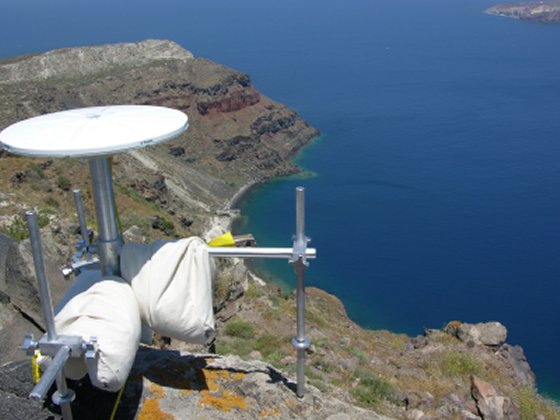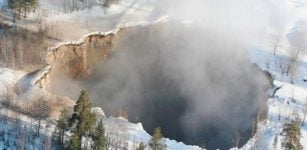Gigantic ‘Balloon Of Magma’ Is Growing Under Santorini – Will The Volcano Be Dangerous Again?
MessageToEagle.com – Santorini Volcano in Greece is the site of the catastrophic Minoan eruption, one of the largest volcanic eruptions in recorded history of mankind and known as the Thera eruption.
The Minoan eruption took place around 1650 BC. and buried the major port city of Akrotiri with more than 20 meters of ash and created Santorini’s famous, present-day cliffs.
The question is: ‘When will the volcano next erupt?’
Santorini has been relatively calm since its last eruption in 1950. Until now. The Santorini caldera is awake again and rapidly deforming at levels never seen before, explained Georgia Tech Associate Professor Andrew Newman, who has studied Santorini since setting up more than 20 GPS stations on the island in 2006.
“After decades of little activity, a series of earthquakes and deformation began within the Santorini caldera in January of 2011,” said Newman.

Since then, our instruments on the northern part of the island have moved laterally between five and nine centimeters. The volcano’s magma chamber is filling, and we are keeping a close eye on its activity.”

According to yet another survey carried out by an international team of scientists from Oxford University and the University of Bristol, the chamber of molten rock beneath Santorini’s volcano expanded 10-20 million cubic metres – up to 15 times the size of London’s Olympic Stadium – between January 2011 and April 2012.
The growth of this ‘balloon’ of magma has seen the surface of the island rise 8-14 centimetres during this period, the researchers found.
The results come from an expedition, funded by the UK’s Natural Environment Research Council, which used satellite radar images and Global Positioning System receivers (GPS) that can detect movements of the Earth’s surface of just a few millimetres.
The findings are helping scientists to understand more about the inner workings of the volcano which had its last major explosive eruption 3,600 years ago, burying the islands of Santorini under metres of pumice.
In January 2011, a series of small earthquakes began beneath the islands of Santorini. Most were so small they could only be detected with sensitive seismometers but it was the first sign of activity beneath the volcano to be detected for 25 years.
Following the earthquakes Michelle Parks, an Oxford University DPhil student, spotted signs of movement of the Earth’s surface on Santorini in satellite radar images. Oxford University undergraduate students then helped researchers complete a new survey of the island.
“During my field visits to Santorini in 2011, it became apparent that many of the locals were aware of a change in the behaviour of their volcano. The tour guides, who visit the volcano several times a day, would update me on changes in the amount of strong smelling gas being released from the summit, or changes in the colour of the water in some of the bays around the islands,” Michelle Parks of Oxford University’s Department of Earth Sciences said.
“On one particular day in April 2011, two guides told me they had felt an earthquake while they were on the volcano and that the motion of the ground had actually made them jump. Locals working in restaurants on the main island of Thera became aware of the increase in earthquake activity due to the vibration and clinking of glasses in their bars….”
“People were obviously aware that something was happening to the volcano, but it wasn’t until we saw the changes in the GPS, and the uplift on the radar images that we really knew that molten rock was being injected at such a shallow level beneath the volcano.
Many volcanologists study the rocks produced by old eruptions to understand what happened in the past, so it’s exciting to use cutting-edge satellite technology to link that to what’s going on in the volcanic plumbing system right now,” Dr Juliet Biggs of the University of Bristol’s School of Earth Sciences, co-author of the paper said.
Researchers calculate that the amount of molten rock that has arrived beneath Santorini in the past year is the equivalent of about 10-20 years growth of the volcano. But this does not mean that an eruption is about to happen: in fact the rate of earthquake activity has dropped off in the past few months.
The research is reported in this week’s Nature Geoscience.
MessageToEagle.com











